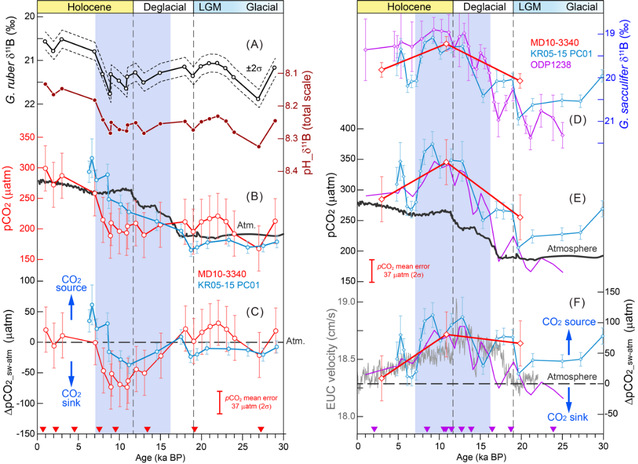Zhimin Jian1 , Jimin Yu2,3 , Yue Wang1 , Haowen Dang1 , Minhan Dai4 , Chen Li1 ,
Xuan Ji3 , Xingxing Wang1 , and Yue Chen1
1State Key Laboratory of Marine Geology, Tongji University, Shanghai, China,
2Laoshan Laboratory, Qingdao, China,
3Research School of Earth Sciences, The Australian National University, Canberra, ACT, Australia,
4State Key Laboratory of Marine Environmental Science, Xiamen University, Xiamen, China
Abstract:The eastern equatorial Pacific (EEP) is a source of atmospheric CO2 during the last deglaciation, but the associated oceanic dynamics in the broader low-latitude Pacific is not fully understood. Here, we report 30,000-year-long surface and subsurface pCO2 records for the western equatorial Pacific (WEP), based on boron isotopes in two planktonic foraminiferal species from core MD10-3340. Our results show that the WEP surface became a significant atmospheric CO2 sink despite that its subsurface waters were enriched by CO2 during the last deglaciation to early Holocene. Combined with EEP proxy data and model results, we suggest that a deglacial-early Holocene zonal seesaw of sea-air CO2 exchange across the equatorial Pacific led to a net CO2 outgassing much greater than the modern situation. This can be ascribed to strengthened Subtropical-Tropical Circulation, resulting in stronger upper ocean stratification in the WEP concurrent with enhanced upwelling of CO2-rich subsurface waters in the EEP.
Full Article:https://agupubs.onlinelibrary.wiley.com/doi/10.1029/2023GL105169



